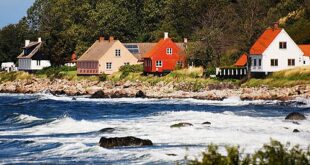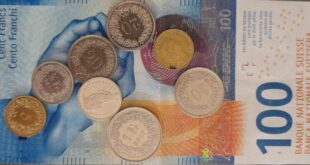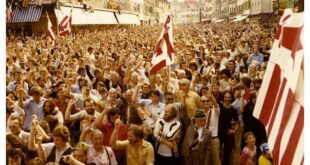Sápmi, the country of the Sámi people, is divided between the states of Sweden, Norway, Finland, and Russia.
The main reason for the forced relocations in Sápmi was the fact that our people lived on many sides of what was to become borders and in nationalistic times they weren’t permitted to come back to their homelands and cross the new national borders of the states they lived within.
“The Sámi are people of the Sun and Wind” says Inga-Maria Mulk and adds “Sámi are small people in number, about 70,000, but they are a part of the 300 million people who are indigenous.” Sápmi, the country of the Sámi people, is divided between the states of Sweden, Norway, Finland, and Russia. Norway has the largest Sámi population with 35 000 and there are 17 000 Sámi people in Sweden, 5 000 in Finland, and 2000 in Russia. Sámi population is mostly urbanized but a great number live in villages in the high Arctic.
Colonization of Sápmi began in the 16th century and resulted in a way that the Shamanic religion of Sámi people replaced with Christianity by force. For centuries the laws of sovereign states denied the identity and cultural rights of the Sámi people. Sámi children were taken to missionary and state-run boarding schools. As a result of these policies, the Sámi people suffered serious linguistic and cultural losses. Today, The Sámi are experiencing cultural and environmental threats such as oil exploration, mining, dam building, climate change, tourism, and commercial development.
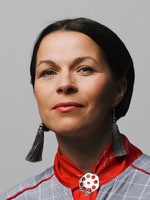
The Sámi people have established museums and cultural centers in order to preserve their culture and language. Sámi people have a diversity of languages and dialects that belong to the Samoyedic and Finno-Ugric groups of the Uralic language family. East Sámi includes: Ter Sámi, Kildin Sámi, Skolt Sámi and Inari Sámi. Central Sámi consists of North Sámi, Lule Sámi, and Pite Sámi, while South Sámi has Ume Sámi and South Sámi. Sámi literature is an important representative of indigenous literature with its mythological riches. Gákti, traditional Sámi clothing, silver handicrafts, reindeer, Shamanic drums, and joiks (traditional Sámi song-chants) are symbolic values of Sámi culture.
Elin Anna Labba is a Sámi author and journalist. She has won multiple prizes for her first book Herrarna satte oss hit: om tvångsförflyttningarna i Sverige, which describes the forced migration of the Sámi from Norway to Sweden from 1919 to 1920. She was a former editor-in-chief of Nuorat magazine. She now works at Tjállegoahte, the Sápmi Writers’ Centre in Jokkmokk, Norrbotten. Her Sirdolaccat was awarded Sweden’s most distinguished literary prize, the August Prize, for best nonfiction title in 2020.
Elin Anna Labba has won multiple prizes for her first book Herrarna satte oss hit: om tvångsförflyttningarna i Sverige, which describes the forced migration of the Sámi from Norway to Sweden from 1919 to 1920.
Samî Hêzil: Thank you for kindly accepting this interview. I would like you to tell us shortly about your people, the Sámi people who live in Samiland.
Elin Anna Labba: We call our country Sápmi and for us, it’s one land, even though it’s formally divided by four nations: Sweden Norway, Finland and Russia. It’s an arctic land without capital. The only capitals are the mountains, the rivers, and the lakes. As an indigenous people the Sámi cherish those capitals more than cities, quite naturally as we don’t have that much of big cities. People call a lot of our land wilderness, but that is just because the traces of the people are very silent kind of traces. A lot of people are still making a living out of the ground: fishing, reindeer herding, and handicraft. There are some differences between countries as well. Most difficult being a Sámi person on the Russian side, and least difficult on the Norwegian side. Sweden and Finland are in the middle fighting about who’s the one ignoring the sámi most. I would say it is a very even play.
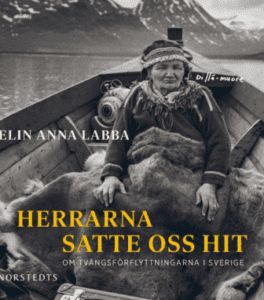
As Sámi people, what is on the agenda of your people? As I know you have been struggling against mine projects and there are some laws that prevent you to own land. Could you please explain us these though issues, how is the situation now?
The biggest issue on the agenda are the climate changes, and that includes big exploitations as mines and vast forestry as they are causing the problems. We have a very rich country in the north so to speak that we have a lot of natural resources. We live in a land with big forests, a lot of minerals, and rivers that are used for hydropower energy, but the sámi people have very little say when it comes to choosing and interfering with and sustainably manage the resources, and the same time our life is deeply depend on the nature. We have no life as people if there is nature left. The sámis have become more and more active and sámi youth are often the ones taking the fights, not always successfully but people have gone from being ashamed of showing their identity to loudly opposing the devastation of traditional sámi lands. There has been a huge shift in identity since the time when I was a kid.
The biggest issue on the agenda are the climate changes, and that includes big exploitations as mines and vast forestry as they are causing the problems.
How would you describe the agony and pleasure of being a Sámi?
The pleasure is the artful way of living and thinking surrounding people in Sápmi. There is a culture of making things beautifully and speaking beautifully, I think that is why we have a lot of artists being such a small minority. Poetry and storytelling are very alive in our society and I just love being part of that kind of place. We have a lot of cultural power, a power that is not at all transferred into politics, but a power in mind and body. Almost every sámi is an artist. And nature is one big pleasure. We wouldn’t even need art as we live in it.
The agony is the constant struggle for keeping alive as a people and those struggles are unfortunately everywhere in daily life, even if live in some of the most democratic countries in the world. We are struggling for our languages to survive, keeping our stories, and our beliefs, and relearning everything we were learnt to be ashamed of. We are about to rebuild our society in just every way. The big Sámi pain for me personally is to be so very invisible. I try not to focus on the states we live in but is an agony to be ghosted as a people in modern democratic societies that are so keen on human rights abroad and on international scenes.
The agony is the constant struggle for keeping alive as a people and those struggles are unfortunately everywhere in daily life, even if live in some of the most democratic countries in the world.
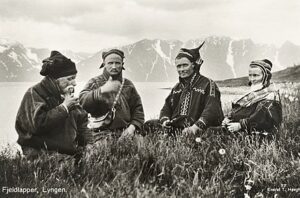
You have been working for The Writers’ Centre of Sápmi “Tjállegoahte” and recently you have carried out a project, Belongings, together with some Kurdish writers. Could you please tell us about your impression in relation to that contact with Kurds and all those new acquaintances?
We have never had a project where we have laughed and cried that much, often simultaneously. It was a wonderful project and I can speak for all of us being part of it that it wasn’t just one of those trips you go to or one of those groups of people you come to like. It was incredible to talk about colonization, language, music, mountains, and a lot of other things and find someone understanding. We so often speak to people that are staring back with empty faces. And finding that in a world very different from ours! I hadn’t expected that. Unfortunately, the project was so short. I think the group could have been working for much longer, as we had too little time to write all those wonderful meetings we had. I so much want to come back to Kurdish lands and I hope we will find more places to work together bringing our artistic societies together.
I so much want to come back to Kurdish lands and I hope we will find more places to work together bringing our artistic societies together.
“Herrarna satte oss hit” (The Rocks Will Echo Our Sorrow) is the title of your last book. Could you please share some details about it? And what are you currently working on, I mean is there a new book project?
It is a book collecting stories from sámi people that have been displaced. The main reason for the forced relocations in Sápmi was the fact that our people lived on many sides of what was to become borders and in nationalistic times they weren’t permitted to come back to their homelands and cross the new national borders of the states they lived within. My family was one of those that had to leave the island and mountains where they used to live and move more south in Sweden. So it’s a very personal book and the result of many years of interviews with elderly sámi people that still remembered the forced relocations. None of them that had memories are alive, today. The last one passed away a few months ago. I’m currently trying to write a novel. The future hasn’t yet decided the story of that book, will it find readers or will it be one of those forgotten ones? It will be published in Swedish and northern Sámi next year, 2024. I call it “the sea” but it’s a book about a lake.
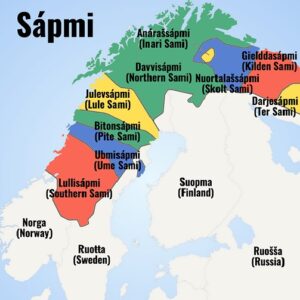
And finally, I would like to ask if there is any privilege of being a Kurdish, a Sámi, or a member of any other oppressed, indigenous people in the world. Despite a long history of suffering and injustice, can we call or describe something that is a part of us as luck?
And what we truly learned from meeting Kurdish people is that you have to create a very big laughter. That is the only thing I’m sure about. The laughter was high and loud. A very decent way to survive.
Oh, there is a lot of luck. We are being raised among stories, that is one big luck for a writer. For writers Sápmi is a very lucky background, there will for thousands of years to come something that we must make art of and write about. Our stories are never the ones being told. But thinking less about myself and more generally I think there are minorities like ours who have different kinds of eyes. For our existence we have to live outside the capitalistic system and think many generations ahead. That seems to be a privilege nowadays, even though I have thought of it as the very natural way of behaving. Those eagle eyes are also specially trained for grasping different aspects and perspectives on life. Maybe you also get very special hearts, burning a lot in many senses, both good and bad senses though. Burning too fast maybe. And what we truly learned from meeting Kurdish people is that you have to create a very big laughter. That is the only thing I’m sure about. The laughter was high and loud. A very decent way to survive.
Cover Photo: Samefolket.se
Interview: Samî Hêzil
——————————
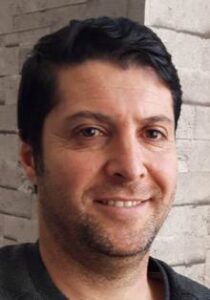 Samî Hêzil is a writer and translator from northern Kurdistan. He has a bachelor’s degree in English Language and Literature and has completed his master’s and doctoral studies in Kurdish Language and Literature. Hêzil writes in the fields of Kurdish language, literature and culture and translates literary and scientific works from English.
Samî Hêzil is a writer and translator from northern Kurdistan. He has a bachelor’s degree in English Language and Literature and has completed his master’s and doctoral studies in Kurdish Language and Literature. Hêzil writes in the fields of Kurdish language, literature and culture and translates literary and scientific works from English.
 Infowelat Enformasyon Ji Bo Welat
Infowelat Enformasyon Ji Bo Welat

